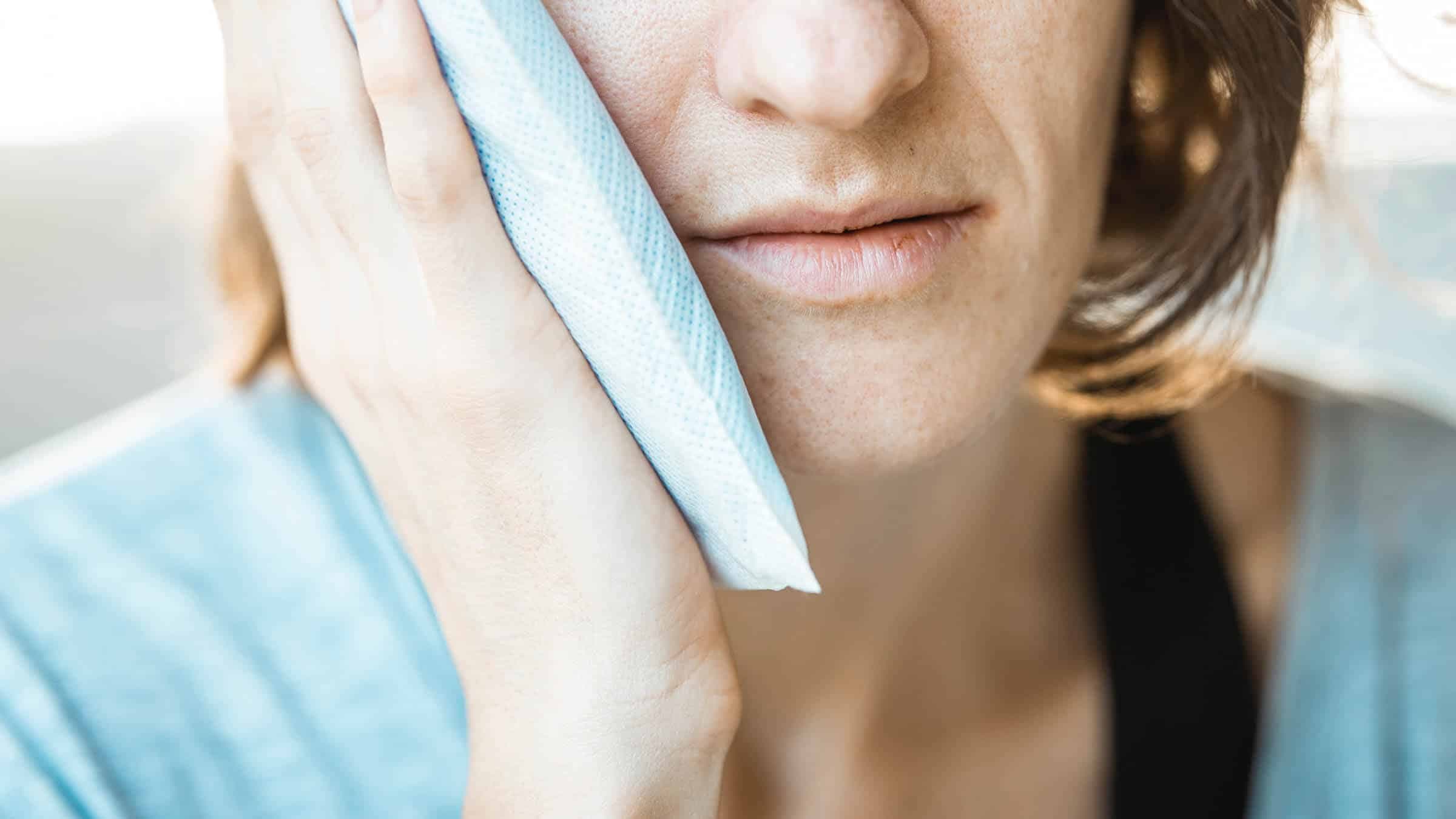Can mewing give you Bella Hadid’s jawline? Our experts dissect the viral beauty trend

A face like Angelina Jolie, a jawline like Cilian Murphy, and the cheekbones of Bella Hadid, all said to be achievable if you were to dedicate yourself to the internet’s new favourite facial exercise: ‘mewing’. But in reality, the results are quite different. Getting snatched, as promoted to us by the likes of TikTok, is not as easy as it’s being made out, and the exercise to reduce double chins and retain a razor-sharp jawline could have adverse effects.
It’s no wonder that the quick and easy beauty trend has taken hold of the internet, with its 2-second results being said to improve facial structure and get you picture-perfect for every unexpected snap. ‘Red-carpet ready’ is what many of the videos promote, detailing the likes of celebs before and after they ‘mew’ for a photo. Just rest your tongue on the roof of your mouth, and with closed lips, clench your teeth and breath through the nose. The perfect solution, right?
Well, no. Quick and easy it may be, but the prolonged issues of the short term solution could have the opposite effect. Dr. Usman Qureshi, an aesthetic doctor and founder of the Luxe Clinic explains that “it wouldn’t be something I would recommend for permanent results. It’s unrealistic that someone could hold this ‘pose’ all day, every day and if they do, it could cause adverse effects such as crooked teeth, chipped teeth and even cause pain in the jaw/TMJ [the joint connecting your jaw to your skull] pain”.
Dr. Tara Francis, a cosmetic dentist and advanced facial aesthetician of Enhance by Dr. Tara, echoes this, stating the cons with ‘mewing’ can “only change your appearance for a temporary amount of time. ‘Mewing’ requires you to keep your teeth touching at times that are unnatural, which can potentially wear it down and maybe even cause cracks in the enamel. Unless you’re a clencher or grinder, upper and lower teeth only touch when swallowing and don’t even always touch when chewing as food will be between them.”
The issues with the unnatural positioning when practising ‘mewing’ can lead to a variety of joint pain in the jaw as Dr. Qureshi explained, as well as dental risks. “If overdone, unnatural position of the tongue and jaw posture could also cause aches in the mouth, jawline and neck,” adds Dr. Francis. “Misalignment of the teeth is also a risk.”
Further to this, Dr.Edris Farahbod, an MD Aesthetic specialist at Beverly Hills Clinic also states the “many risks associated with mewing, including sustained pain in the jawline area, pain or dysfunction at the hinge of your jaw and loose/brittle teeth. Long-term issues can include sleep apnea problems too.”
From this year’s experiments with ‘slugging’, pore-vacuuming, at-home dermaplaning and aspirin-crushed paste for blemishes, the world of damaging beauty trends is proving to be quite the hot topic. And in all the aforementioned cases, they have been debunked by experts to be more damaging than helpful. Outbreaks and allergic reactions have been the results, even the likes of skin infections when not carried out by professionals. Add ‘mewing’ to the list, because it’s now proven that beauty does not have to be such a pain – especially when it causes jaw ache and dental cracks.
The obsession with ‘mewing’ can only be credited to the oversaturation shown online of the ‘perfect’ face, to which the internet hails the likes of Bella Hadid to have. TikTok is filled with videos explaining how ‘mewing’ is proven to be the best way to achieve unrealistic cheekbones and jawlines, stating that its all-natural method can complete alignment of the mouth and nose. With scientific-like clips, the videos are edited with voice overs saying that without it, teeth may be left crooked and mouth-breathing can deform the face.
It’s hard to look past the pressures of online culture’s love for the ‘perfect’ face, but with the growing rise in ridiculous at-home trends that evidently causes more complications than it does fixing them, taking the advice as gospel clearly isn’t the way forward.
There are many alternatives that can improve facial structure, but the unrealistic expectations take time and a more educated approach when pining for results. “There are many treatment options available to reduce the appearance of a double chin and show off a stronger, more chiselled jawline,” says Dr. Qureshi, who has 8 years experience in aesthetic medicine. “An example of this would be Morpheus8 which sculpts the neck and jawline through the use of micro-needling and radio frequency technology. It penetrates and tightens the skin while moulding and sculpting the fat to give a more toned and tight appearance.”
Dr. Francis and Dr. Farahbod also recommend Morpheus8, a skin-tightening treatment that lasts approximately a year and has been proven effective in tightening the skin. But for those looking for natural alternatives, she adds that she “would recommend doing facial massage techniques to help get a sharper jawline. You can also use beauty tools like the gua sha or rollers for results.”
So, as we debunk yet another internet beauty myth, we question why these unrealistic ideals were promoted in the first place. Why aim for the ‘perfect’ face, then suggest techniques that cause more complications? With alternatives that have results to lessen the adverse effects like crooked teeth, misalignment and jaw pain, we can safely say that ‘mewing’ is so last season.

